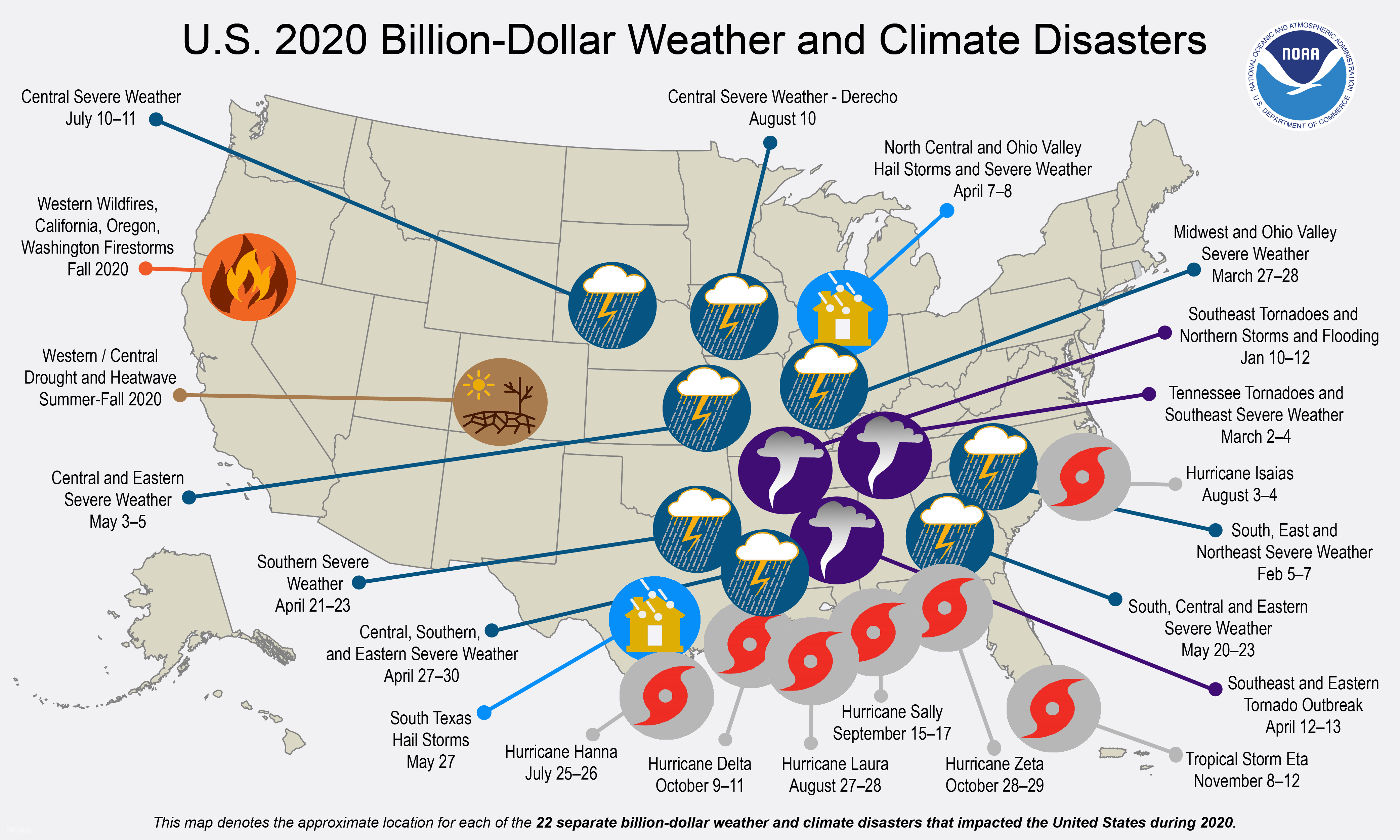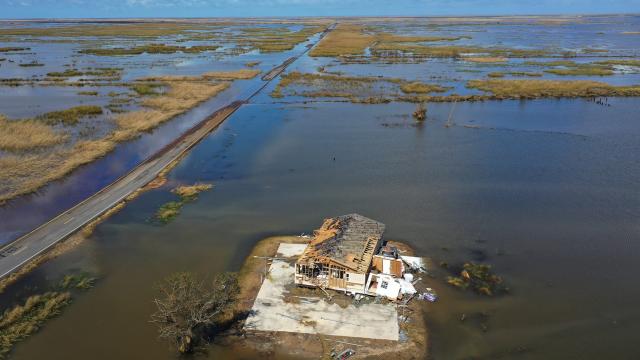A week into 2021, the lesson is already clear that things can get so, so much worse. As if to underscore that, the U.S. National Oceanic and Atmospheric Administration released a report on Friday looking back on 2020, which shows that the U.S. saw a record number of billion-dollar-plus disasters. Yet the total losses weren’t as bad as they could have been — extremely upsetting instead of catastrophic.
A record 22 disasters that cost $US1 ($1.4) billion or more happened in 2020. The previous record was 16 disasters, a mark set in 2011 and tied in 2016. But this was the fourth-most costly year, with an estimated $US95 ($123) billion lost to weather-fuelled carnage that falls well below the massive $US321 ($417) billion in losses during 2017.
“Only” $US95 ($123) billion in damages might not feel like a win. And to be clear, we should not take the very real suffering lightly. Millions of people’s lives were inexorably altered. Everything the federal government has at its disposal should be used to shore up the lives of those who were impacted by the flurry of hurricanes on the Gulf Coast, the derecho that caused massive crop losses in Iowa, and the wildfires that burned over small communities up and down the West Coast and Colorado. Nor does it discount the very serious suffering abroad in places like Central America that were hit by back-to-back major hurricanes in the span of a few weeks.

But the reality is, if one of the record-number of landfalling hurricanes had spun a little closer to a major population centre or a wildfire ignited in the Oakland Hills or any of the other densely populated cities on the West Coast, we would be facing something more on par with 2017 in terms of losses, financial and in human life. Remember, that was a year when fires roared into northern California city with nearly 180,000 residents, and catastrophic hurricanes made direct hits on major cities in Florida, Texas, and Puerto Rico.
The climate crisis is intensifying weather disasters by heating up oceans that in turn can soup-up cyclones and drying out forests that make them more primed to burn. But it doesn’t direct those disasters, and it doesn’t dictate how prepared (or not) humanity is on the ground when they do strike.
That’s on us. To be sure, the world will dictate how much more violent the climate will get depending on how much more carbon pollution it emits. But we also have a choice in how prepared communities are for what’s to come. That means shoring up cities against storm surge whether through hard infrastructure like sea walls or natural ones like restoring wetlands and considering regulations about defensible spaces for places in forests. It also requires us to take a hard look at whether we should be building — and in many cases, rebuilding — in danger zones given all that we know. Last year was both a reminder we have a lot of work to do on that front and how lucky we are it wasn’t worse.
